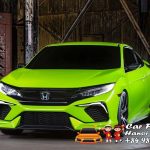vietnam travel photos Vietnam is a country with a rich history, diverse culture, and stunning natural scenery. It is also a paradise for photographers who want to capture the beauty of Vietnam in their travel photos. Whether you are looking for ancient temples, bustling markets, serene landscapes, or colorful festivals, Vietnam has something for everyone. In this blog post, I will share some tips and tricks on how to take amazing Vietnam travel photos that will make your friends and followers jealous.
Choose the Right Time and Location vietnam travel photos
One of the most important factors in taking good Vietnam travel photos is choosing the right time and location. Vietnam has a tropical climate with four seasons: spring, summer, autumn, and winter. Each season has its own charm and challenges for photography. For example, spring is the best time to see the blooming flowers and green rice fields, but it can also be rainy and foggy. Summer is hot and humid, but it offers clear skies and vibrant colors. Autumn is cool and dry, but it can be cloudy and dull. Winter is cold and misty, but it can also create a mysterious and romantic atmosphere. vietnam travel photos

Depending on your preference and style, you can choose the season that suits you best. However, you should also be aware of the weather conditions and plan accordingly. For example, if you want to take photos of the sunrise or sunset, you should check the weather forecast and the sun position before you go. You should also avoid shooting in the middle of the day when the sun is harsh and the shadows are strong. vietnam travel photos
Another factor to consider is the location. Vietnam has many beautiful places to visit, but some of them are more photogenic than others. For example, some of the most popular places for Vietnam travel photos are:
- Ha Long Bay: A UNESCO World Heritage Site with thousands of limestone islands and caves in the emerald water.
- Hoi An: An ancient town with colorful lanterns, wooden houses, and canals.
- Sapa: A mountainous region with terraced rice fields, ethnic villages, and stunning views.
- Hue: The former imperial capital with majestic palaces, tombs, and pagodas.
- Ho Chi Minh City: The largest and most modern city in Vietnam with skyscrapers, markets, and museums.
- Hanoi: The capital and cultural center of Vietnam with old quarters, lakes, and temples.
Of course, these are not the only places to visit in Vietnam. You can also explore other less-known but equally beautiful places, such as Phong Nha-Ke Bang National Park, Ninh Binh, Da Lat, Mui Ne, Phu Quoc, and more. The key is to do some research and find the places that match your interests and vision. vietnam travel photos
Use the Right Equipment and Settings
Another factor that affects the quality of your Vietnam travel photos is the equipment and settings you use. Depending on your budget and skill level, you can choose the equipment that works best for you. However, some general tips are:

- Use a DSLR or mirrorless camera for better image quality and flexibility. You can also use a smartphone or a compact camera if you want to travel light and simple.
- Use a wide-angle lens for capturing landscapes and architecture. You can also use a telephoto lens for zooming in on details and wildlife. A prime lens or a zoom lens with a large aperture can help you create a shallow depth of field and blur the background.
- Use a tripod for stabilizing your camera and taking sharp photos in low-light conditions. You can also use a remote shutter or a self-timer to avoid camera shake.
- Use a polarizing filter for reducing glare and enhancing colors and contrast. You can also use a neutral density filter for creating long exposures and smooth water effects.
- Use a flash or a reflector for filling in the shadows and adding light to your subject. You can also use natural light sources, such as the sun, the moon, or the lanterns.
- Use manual mode or aperture priority mode for controlling the exposure and depth of field. You can also use shutter priority mode or auto mode if you want to capture fast-moving subjects or let the camera decide the settings.
- Use RAW format for preserving more details and colors in your photos. You can also use JPEG format if you want to save space and time.
- Use the rule of thirds for composing your photos. You can also use other composition techniques, such as leading lines, symmetry, framing, negative space, and foreground interest.

Contact us:
Car For Rent Hanoi VietNam
https://zalo.me/0986244358
Be Creative and Have Fun
The last but not least factor in taking great Vietnam travel photos is being creative and having fun. Vietnam is a country with a lot of diversity and surprises, so you should be open-minded and adventurous. You can try different angles, perspectives, and techniques to create unique and interesting photos. You can also interact with the locals, join the festivals, and taste the food to experience the culture and the lifestyle of Vietnam. The more you enjoy your trip, the more you will capture the essence and the emotion of Vietnam in your photos.

I hope this blog post has given you some useful tips and inspiration on how to take amazing Vietnam travel photos. Vietnam is a beautiful and fascinating country that deserves to be explored and photographed. So, what are you waiting for? Grab your camera and book your flight to Vietnam today!












